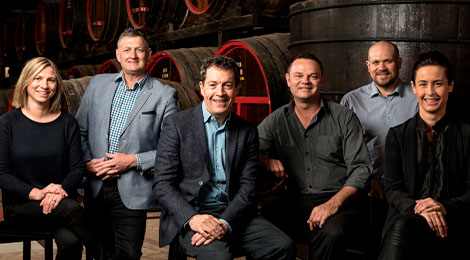Bin 169 Coonawarra Cabernet Sauvignon 2018
Penfolds
Bin 169 Coonawarra Cabernet Sauvignon 2018
Overview
Overview
Created to reflect a Penfolds contemporary winemaking approach, emphasising both regionality and maturation of cabernet sauvignon in fine-grained French oak. A style that is immediately Penfolds, whilst simultaneously illustrative of its ongoing search for diversity and style separation. An honest reflection of the region bearing testament of Penfolds longstanding commitment to the vineyards of Coonawarra.
When purchased in a case (6 bottles), this wine comes in a Penfolds branded wooden box.
| Varietal | Cabernet Sauvignon |
|---|---|
| Vintage | 2018 |
| Country | Australia |
| Region | Coonawarra |
| Volume | 750 mL |
| Closure | Cork |
| Alc/Vol | 14.5% |
| Peak Drinking | 2023 - 2040 |
| Winemaker | The Penfolds Team |
Awards and Accolades
Awards and Accolades
| 98 points | Tony Love |
| 98 Points | Huon Hooke |
Tony Love
"This year’s Special Bin release is Bin 169 Coonawarra Cabernet Sauvignon 2018: A really sophisticated, almost understated, seductive and compelling wine and highly recommended. It grows and grows as you sip and savour – 98 points."
Huon Hooke
"Very deep, dark, youthful purple/red colour, impressive in the glass. The bouguet is reserved and understated, with more earthy, savoury aromas coming first followed by cassisy cabernet-like nuances, the palate more elegant than expected with lovely purity of concentrated blackberry, blackcurrant caberney fruit skilfully welded to neatly integrated oak charcters, A cracking wine, concentrated but in no way heavy or overwrought. Indeed, it has real elegance. A delicious wine, and there's much more to come for those who are patient. – 98 points."
Food Pairing
Food Pairing
Beef
Chicken
Lamb
Duck
Pasta
Veg
Spicy Food
Taste Description
Taste Description
Nose
Fragrant, lively. Soars! Alluring – an innocent sniff certainly draws you immediately back to the glass, soon to tempt that hurried first ingestion. An array of glacéed fruits – red-infused jube and pastille notes. Aromas remind of flambé crêpe suzette with the faintest hint of (Grand Marnier) orange. A suggestion of oak – linked to scents of dry tea leaf (Earl Grey)? But an infant!
Flavours and Palate
Shouts Coonawarra! An immediate proclamation at first sip. Red fruits swamp the palate – raspberry, cranberry, redcurrant, rhubarb … and a little cassis. No mid-palate deficit – this cabernet’s mouth-watering acidity and succulence fill all gaps. Grainy, highly defined / high-resolution tannins – right across the palate, in tandem with supportive oak. A balanced density and volume. Expansive.
Viticulture Vintage & Winemaking
Viticulture Vintage & Winemaking

Coonawarra, South Australia
Coonawarra, on South Australia’s Limestone Coast, is a flat, isolated region almost mid-point between Adelaide and Melbourne. The area enjoys a cool maritime climate - similar to that of Bordeaux - and is renowned for its unique terra rossa soil. Rich, rust coloured soils… crimson sunburnt faces… magenta sunsets: this is red wine country! While Coonawarra is famous for its rich, minty Cabernet, the area also produces Shiraz and Merlot and surprisingly good Chardonnay and Riesling.
Vintage Conditions
Coonawarra enjoyed near long-term average winter rainfall, and slightly below average spring rainfall. Following a frost event on November 4th temperatures were generally warmer, +3.6°C above average thanks to a combination of high minimum and maximum temperatures. Coonawarra experienced 13 days greater than 35°C during the months of January, February and March, with the longest spell spanning 3 days (17th – 19th January). The hottest day recorded was 42°C on January 19th. From December to mid-April conditions were very dry, delivering only 50mm, which is half the normal rainfall. Subsequently, there was no disease pressure. Mild conditions prevailed over the harvest, allowing grapes to ripen with optimal flavour and fine tannins. An excellent vintage for Coonawarra cabernet sauvignon.

The Penfolds Team
Key to the success of Penfolds has been a lineage of visionary winemakers. There have only ever been four Chief Winemakers at the helm of Penfolds – Max Schubert, Don Ditter, John Duval and Peter Gago, each a custodian of a rich winemaking tradition that goes back for more than 170 years.
Our current Penfolds winemaking team has more than 100 years between them as Penfolds winemakers. They are constantly refining and improving their work, whilst honouring the winemaking techniques of their predecessors.



